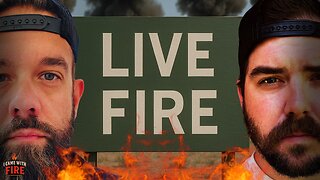Premium Only Content

birds eat their food
birds eat their foodFattening up
A bird’s digestive system is adapted to get the most from its food in the shortest time. This means birds can quickly turn food into fat, to survive a hard winter or a long migration flight. A sedge warbler can increase its body weight from 10 to 18 grams in the two weeks before migration.
Fast digestion also means young birds grow up quickly. A willow warbler is ready to fly to Africa within two months of hatching from its egg.
Getting it down
Birds have no teeth, so they can’t chew their food. Instead, they just drop it down their throat. Some birds, such as pigeons and game birds, have a pouch in their throat called the crop. Here they store food when feeding in a hurry, ready to digest it later.
Sticky spittle
Most insect-eating birds use saliva to stick their food together and make it easier to swallow. Others, such as swallows use it as glue when making their nests. Cave swiftlets in eastern Asia make their nests entirely out of saliva, which hardens in the air.
Breaking it down
Inside a bird’s stomach, food is bathed in digestive juices and then passes into a special muscular organ called the gizzard. This grinds it down into smaller pieces for easy digestion. Some birds, such as ostriches, swallow pebbles to help the grinding process.
Coughing it up
Birds of prey use their gizzards to store indigestible bits of what they have eaten, such as fur, bones and feathers. They then cough them all up in a ball, called a pellet. You can find owl pellets underneath the trees that owls roost in. If you put an owl pellet in warm water, it will fall apart and you can see mouse skulls or the remains of what the owl had for dinner. Make sure you wash your hands thoroughly after touching owl pellets.
-
 2:27:53
2:27:53
TheSaltyCracker
3 hours agoGot Him ReeEEStream 9-12-25
206K189 -
 52:11
52:11
Sarah Westall
5 hours agoBread and Circus Keeps you Financially Ignorant – Its Better for the Elites w/ Chris Russo
25.9K2 -
 LIVE
LIVE
I_Came_With_Fire_Podcast
11 hours agoFriday Night Live Fire
363 watching -
 DVR
DVR
Flyover Conservatives
13 hours agoFrom Demonic Deception to Divine Direction: Sid Roth’s Radical Encounter With God | FOC Show
18.7K1 -
 LIVE
LIVE
Chrissie Mayr
2 hours agoChrissie Mayr Reactions to Charlie Kirk, Liberal Celebrations, and More
316 watching -
 1:05:46
1:05:46
AlaskanBallistics
2 hours ago $0.66 earnedRemembering Charlie Kirk
12.1K1 -
 1:23:27
1:23:27
Glenn Greenwald
4 hours agoNetanyahu’s Crude Exploitation of Charlie Kirk’s Death to Get the American Right Back into Line; Plus: Q&A With Glenn on Charlie Kirk's Assassination, Online Civil Discourse, and More | SYSTEM UPDATE #514
175K112 -
 4:10:25
4:10:25
Nerdrotic
8 hours ago $14.65 earnedCulture Is VITAL! Streaming BUST, Warner Bros. Buyout | Friday Night Tights 371 with Vara Dark
198K23 -
 1:02:32
1:02:32
BonginoReport
6 hours agoCharlie Kirk’s Assassin In Custody, Details Emerge - Nightly Scroll w/ Hayley Caronia (Ep.133)
183K182 -
 LIVE
LIVE
LFA TV
23 hours agoKILLER CAUGHT LIVE PRESSER! - FRIDAY 9/12/25
684 watching